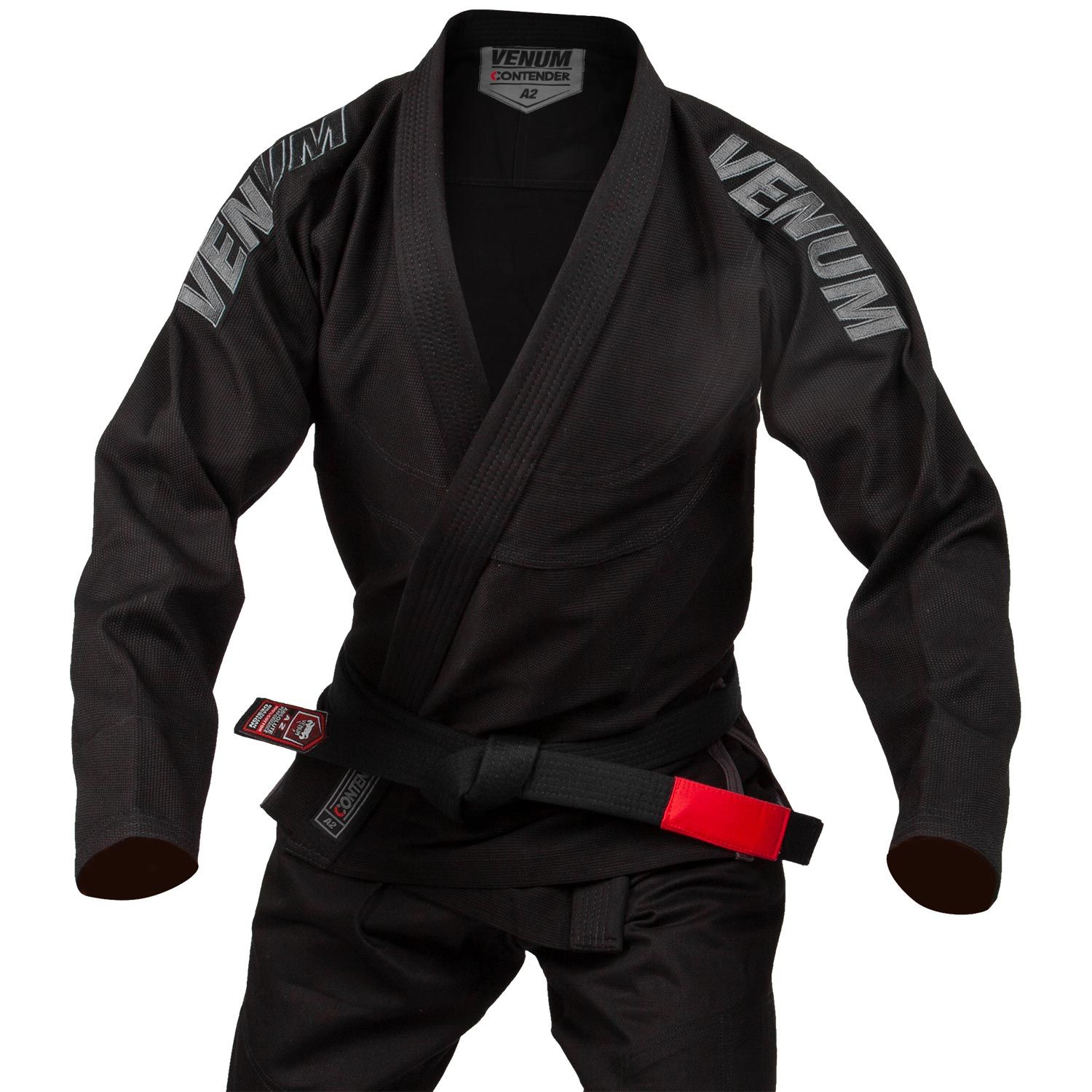BJJ Gi,Gear,Dojo,Equipments 👇⏬
The BJJ gi, short for Brazilian Jiu-Jitsu gi, is a fundamental component of the practice and culture of Brazilian Jiu-Jitsu (BJJ). Similar to a traditional martial arts uniform, the BJJ gi consists of a jacket, pants, and belt. However, what sets it apart is its design and construction tailored specifically for the demands of BJJ training and competition. Typically made from durable and thick cotton or a blend of cotton and polyester, the BJJ gi provides practitioners with both protection and grip for executing techniques such as chokes, joint locks, and throws. Beyond its practical functionality, the gi also symbolizes tradition, discipline, and respect within the BJJ community, making it an integral part of the sport’s ethos and identity.

BJJ Gear
BJJ gear encompasses a range of essential equipment and attire used by practitioners of Brazilian Jiu-Jitsu (BJJ) to enhance their training experience and performance. Key items include the BJJ gi (kimono), which consists of a jacket, pants, and belt, designed for both traditional gi-based training and competition. No-gi practitioners often opt for rash guards, tight-fitting shirts, and grappling shorts or spats, which offer comfort, protection, and unrestricted movement during training. Additionally, BJJ practitioners may utilize accessories such as mouthguards, ear guards, knee pads, and finger tape to prevent injuries and maximize their safety. Training gear also extends to equipment like mats, grappling dummies, and training partners, all of which contribute to a well-rounded and effective BJJ training regimen. Whether training in the gi or no-gi, having the right gear is essential for practitioners to optimize their performance, safety, and enjoyment of Brazilian Jiu-Jitsu.
BJJ No Gi
BJJ no-gi, often referred to simply as “no-gi,” is a variant of Brazilian Jiu-Jitsu practiced without the traditional uniform, known as a gi. Unlike traditional BJJ, where practitioners wear a gi consisting of a jacket, pants, and belt, no-gi practitioners wear rash guards or tight-fitting shirts and shorts or spats. Additionally, instead of gripping the fabric of the gi to control opponents, practitioners in no-gi rely more on body positioning, leverage, and direct skin-to-skin contact to execute techniques. No-gi training places a greater emphasis on speed, agility, and athleticism, as it eliminates the grips and friction provided by the gi, requiring practitioners to adapt their techniques accordingly. While both gi and no-gi are integral parts of Brazilian Jiu-Jitsu, training in no-gi offers practitioners a different set of challenges and strategies, making it a valuable aspect of a well-rounded BJJ practitioner’s skill set.

Kimono Jiu Jitsu
The kimono, also known as a gi, plays a central role in traditional Brazilian Jiu-Jitsu (BJJ) training and competition. Modeled after the traditional Japanese judo uniform, the BJJ kimono consists of a jacket, pants, and belt. Made from sturdy and durable materials like cotton or a cotton/polyester blend, the kimono is designed to withstand the rigors of grappling while providing grip for executing techniques such as chokes, joint locks, and throws. In addition to its functional aspects, the kimono holds symbolic significance within the BJJ community, representing discipline, respect, and tradition. Whether worn for training or competition, the kimono serves as an essential tool for practitioners to hone their skills and embody the principles of Brazilian Jiu-Jitsu.
BJJ Rash Guards
BJJ rash guards are essential attire for practitioners of Brazilian Jiu-Jitsu (BJJ), particularly in no-gi training or competition. These form-fitting, moisture-wicking shirts are typically made from lightweight yet durable materials like polyester-spandex blends. Designed to provide comfort and protection, rash guards help prevent mat burns, friction, and skin abrasions during intense grappling sessions. Additionally, they offer UV protection for outdoor training and minimize the spread of bacteria on the mats. BJJ rash guards come in various styles and designs, often featuring reinforced stitching and compression fit to enhance durability and mobility. Whether worn alone or under a gi jacket, rash guards are a staple in the wardrobe of BJJ practitioners, providing both practical benefits and a touch of individual style to their training attire.

BJJ Belts
BJJ belts are an integral part of the martial art’s ranking system, denoting a practitioner’s skill level and progress within the discipline of Brazilian Jiu-Jitsu (BJJ). The BJJ belt system typically consists of several colored belts, each representing a different level of proficiency and experience. The sequence of belt colors generally starts with white, followed by blue, purple, brown, and black. Beyond black belt, there are additional degrees known as degrees or stripes. The color and width of the belt may vary depending on the specific BJJ organization or school. In addition to serving as a symbol of rank, BJJ belts also hold significant cultural and symbolic meaning, representing attributes such as dedication, perseverance, and mastery of technique. Earning a higher belt rank in BJJ requires not only technical skill but also commitment, discipline, and a deep understanding of the art’s principles and philosophy.

BJJ Dojo
A BJJ dojo, also known as a Brazilian Jiu-Jitsu academy, is a training facility specifically designed for practitioners to learn and practice the art of Brazilian Jiu-Jitsu (BJJ). These dojos provide a dedicated space equipped with mats, training gear, and often a range of amenities tailored to support BJJ training. In a BJJ dojo, students receive instruction from experienced instructors, often including black belts or other highly-ranked practitioners, who guide them through the techniques, strategies, and principles of BJJ. The atmosphere in a BJJ dojo is typically one of camaraderie, respect, and discipline, where students of all levels train together to improve their skills and progress through the ranks. Beyond physical training, BJJ dojos may also offer seminars, workshops, and social events to foster community engagement and support the growth of their members both on and off the mats. Whether one is a beginner or an advanced practitioner, a BJJ dojo serves as a hub for learning, development, and immersion in the rich tradition and culture of Brazilian Jiu-Jitsu.

BJJ Mats
BJJ mats, also known as grappling mats or tatami mats, are a fundamental component of any Brazilian Jiu-Jitsu (BJJ) training facility. These mats are specifically designed to provide a safe and supportive surface for practitioners to train on, helping to reduce the risk of injuries during grappling and groundwork. BJJ mats are typically made from high-density foam covered with a durable, non-abrasive vinyl surface, which offers both cushioning and traction. The surface of BJJ mats often features a textured pattern, such as tatami-style or smooth, to provide optimal grip and stability for practitioners while performing techniques. Additionally, BJJ mats come in various sizes and thicknesses to accommodate different training spaces and preferences. Whether training in a professional academy or a home gym, investing in quality BJJ mats is essential for creating a conducive environment for learning, practicing, and mastering the techniques of Brazilian Jiu-Jitsu.
If you’re interested in combat sports equipment like this, visit my website.




2 Comments